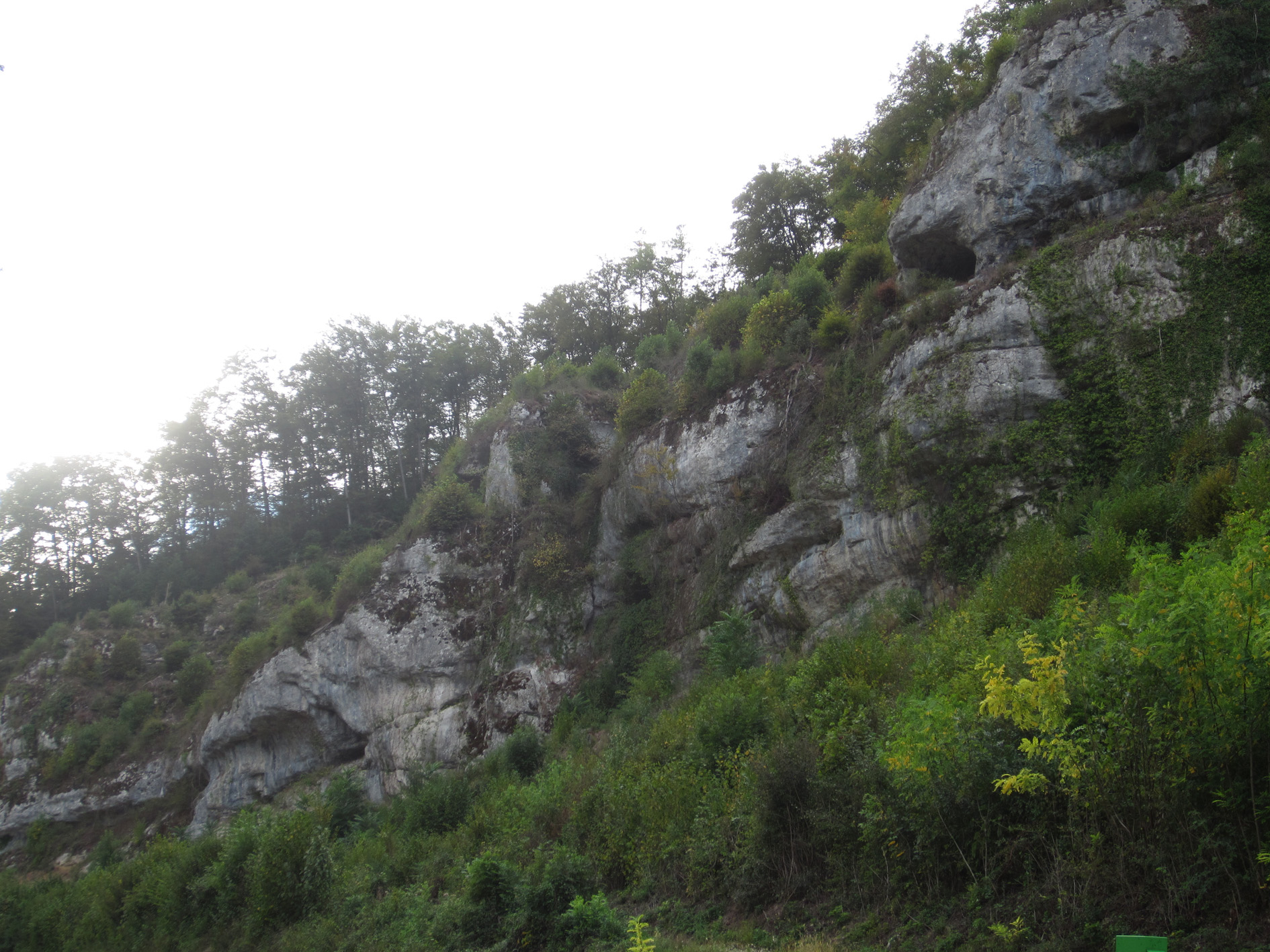Grellingen-Member
Zurück zu JuraDarstellung und Status
- Farbe CMYK
- (0%,5%,3%,25%)
- Farbe RGB
- R: 190 G: 180 B: 185
- Rang
- lithostratigraphisches Member (Subformation)
- Gebrauch
- Element ist in Gebrauch
- Status
- gültiger formeller Begriff
- Diskussion des Status
Nomenklatur
- Deutsch
- Grellingen-Member
- Français
- Membre de Grellingen
- Italiano
- Membro di Grellingen
- English
- Grellingen Member
- Herkunft des Namens
- Historische Varianten
- Grellingen Member (Gygi 2000b, Gygi 2000c)
Links
- Synonyme
Beschreibung
- Beschreibung
- Massige, gut gebankte, weisse Kalksteine im unteren Teil der St-Ursanne-Formation mit hermatypen Korallen, Rotalgen, Bryozoen und anderen Fossilien (Biostrom).
- Geomorphologie
- Kliffbildend
- Mächtigkeit
- 30-40 m
Komponenten
- Korallen
- Algen
- Bryozoan
Hierarchie und Abfolge
- Übergeordnete Einheit
- Hangendes
- Liegendes
- Obergrenze
- oolithisches Tiergarten-Mb. bzw. kreidiges poröses Buix-Mb.
- Untergrenze
- mergeliges Liesberg-Mb.
Alter
- Alter Top
-
- mittleres Oxfordien
- Alter Basis
-
- mittleres Oxfordien
- Datierungsmethode
- Datierung der Umrahmensgesteine mit Ammoniten (Sornetan- und Buix-Mb.).
Geografie
- Geographische Verbreitung
- Zentraler Schweizer Jura.
- Typusregion
- Kantone Baselland, Solothurn und Bern
- Typusprofil
-
-
Eigenhollen (BL)
Merkmale des Ortes- typische Fazies
- Bachprofil
- (2613000 / 1253700)
- Wasserfall SE Grellingen (Gygi 2000c)
-
Eigenhollen (BL)
Paläogeografie und Tektonik
-
- Malm des Juragebirges
- Paläogeografie
-
Northern Tethyan Carbonate Platform (Jura > Helv.)
:
Plateforme de Bourgogne, ... = Northern Tethyan Carbonate Platform (NTCP) - Tektonische Einheit (bzw. Überbegriff)
-
-
Jura
:
Juragebirge
-
Jura
:
- Herkunftstyp
-
- sedimentär
- Bildungsbedingungen
- "Rauracien"
- Metamorphose
- unmetamorph
Referenzen
- Erstdefinition
-
(2000) :
Integrated stratigraphy of the Oxfordian and Kimmeridgian (Late Jurassic) in northern Switzerland and adjacent southern Germany. Denkschriften der Schweizerischen Akademie der Naturwissenschaften 104, 152 S.
p.55
- Neubearbeitung
-
(2000) :
Annotated index of lithostratigraphic units currently used in the Upper Jurassic of northern Switzerland. Eclogae geol. Helv. 93/1, 125-146
p.131: Grellingen Member (Gygi 2000b) ; Member of the St-Ursanne Formation The Grellingen Member was named by Gygi (2000b. p. 55) after the village of Grellingen. Canton Baselland. LK 1067 Arlesheim. Gygi did not indicate a type locality. The best, easily accessible natural outcrop is along the footpath that circumvents the small waterfall of an unnamed creek above Eigenhollen at coordinates 613.000/253.700 on the territory of the village of Duggingen. Canton Baselland. LK 1087 Passwang. The Grellingen Member there forms a vertical cliff with an overhang at the base. This is proposed to be the type locality. The Grellingen Member is normally a massive limestone forming cliffs and has a biomicritic or bioarenitic matrix with hermatypic corals. It is a coral biostrome. Coral bioherms are uncommon, but they do occur (Gygi 20(X)b). The average thickness of the member is about 30 m. The lower boundary with the marly Liesberg Member is at many localities transitional. The upper boundary with the oolitic Tiergarten Member or the porous, chalk-like Buix Member, respectively, is well-defined. No ammonites have yet been found in the Grellingen Member. Ammonites of the Antecedens Subchron occur below in the Sornetan Member (Duong 1974. Pl. 3. Fig. 1. refigured by Gygi 1995. Fig. 25) and above in the Buix Member (Gygi 1995. Fig. 14). The age of the Grellingen Member is thus a fraction of the Antecedens Subchron. The Grellingen Member forms the lower part of the St-Ursanne Formation everywhere in northwestern Switzerland where the formation occurs, except for a relatively narrow strip where the lower St-Ursanne Formation is oolitic/oncolitic (Delémont Member). The correlation of the Grellingen Member can be read from figure 1.

